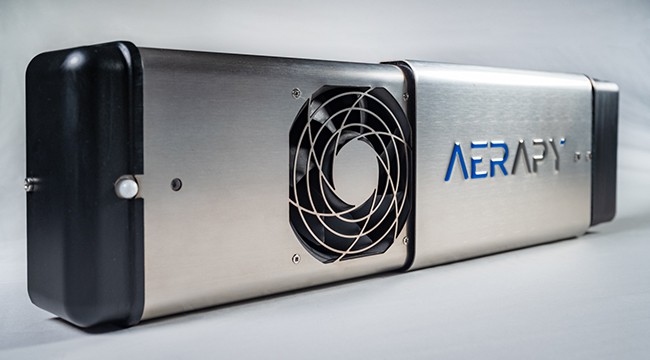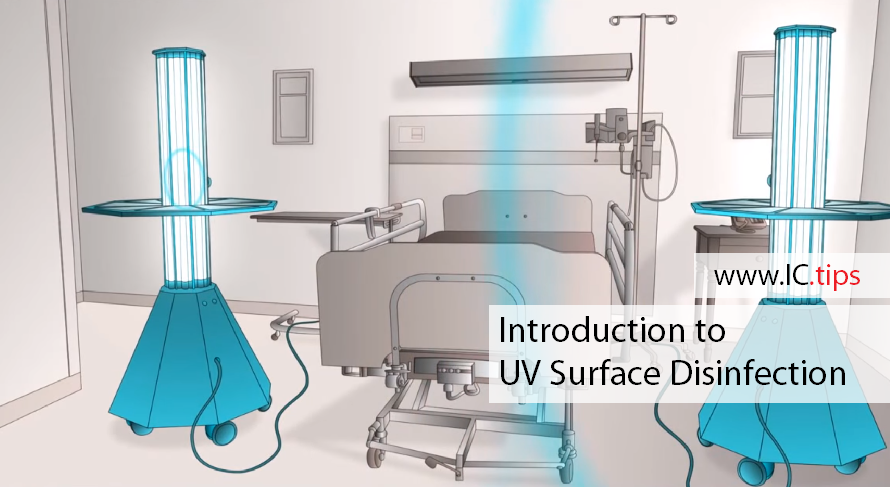Harnessing the Potential of UV Disinfection: Safeguarding Health And Wellness and Health
UV sanitation, a technology commonly made use of in numerous markets, has actually verified effective in eliminating unsafe virus. From understanding the systems at play to applying this technology in our day-to-day lives, this discussion aims to lose light on the capacity of UV sanitation and its function in guarding our health and health.
Recognizing UV Disinfection
UV disinfection is a very effective and widely made use of technique for making sure and getting rid of harmful virus health and wellness and health. This technique makes use of ultraviolet (UV) light to suspend bacteria by damaging their DNA and avoiding them from reproducing. UV disinfection is specifically reliable against germs, viruses, and various other bacteria that can trigger infections and diseases.
The principle behind UV sanitation is basic yet effective. UV disinfection can be applied in different settings, including water treatment plants, healthcare facilities, food handling industries, and air purification systems.
Among the benefits of UV sanitation is its capability to properly and efficiently get rid of a variety of pathogens without the requirement for ingredients or chemicals. Unlike various other disinfection techniques, such as chlorine or ozone, UV sanitation does not present dangerous byproducts or chemical residues into the atmosphere. Furthermore, UV sanitation is a non-contact process, which suggests that it does not call for physical contact with the bacteria, minimizing the danger of cross-contamination.

The Science Behind UV Disinfection
The efficiency of UV disinfection lies in its capacity to disrupt the genetic material of microorganisms, rendering them not able to replicate and thus removing their unsafe possibility. UV, or ultraviolet, radiation is a form of electromagnetic radiation with wavelengths much shorter than visible light. It is classified right into 3 types: UV-A, uv-c, and uv-b. UV-C radiation, particularly, has the quickest wavelength and the highest energy. This high-energy UV-C radiation is most effective in disinfection applications since it can pass through the cell wall surfaces of microbes and harm their DNA or RNA.
When microbes are exposed to UV-C radiation, the power is taken in by their genetic material, causing bonds to break and developing chemical reactions that disrupt their ability to reproduce. This protects against the bacteria from duplicating and spreading out infection. UV sanitation is specifically efficient against bacteria, infections, and fungi, consisting of usual virus such as Escherichia coli, Salmonella, and Influenza.
The science behind UV disinfection is sustained by substantial research study and studies. It has been shown that exposure to an enough dose of UV-C radiation can achieve a high level of sanitation, typically going beyond 99.9% efficiency in eliminating microbes. It is essential to keep in mind that the effectiveness of UV disinfection depends on various variables, consisting of the strength of UV-C radiation, exposure time, distance from the UV source, and the vulnerability of the microorganism to UV radiation (uv surface disinfection).
Applications of UV Disinfection
Given the extensive research study and effectiveness of UV sanitation in interrupting the hereditary material of microbes, it is very important to explore the various practical applications of this innovation. UV sanitation has actually verified to be a beneficial tool in a wide variety of markets where keeping a risk-free and tidy environment is crucial.
One major application of UV sanitation is in health care settings. UV light can be made use of to sanitize surfaces, tools, and even the air in medical facilities and clinical centers. This assists to decrease the threat of healthcare-associated infections and ensures a safer environment for clients and medical care workers.
One more vital application is in the food and drink market. UV disinfection is made use of to deal with informative post water and eliminate damaging microorganisms, such as click here now E. coli and Salmonella, from the manufacturing process. uv surface disinfection. This makes sure the safety and quality of the items we consume
UV disinfection is likewise extensively made use of in water treatment plants and wastewater therapy facilities. It is a reliable technique for ruining hazardous germs, viruses, and bloodsuckers that can be existing in water resources. This helps to supply clean and risk-free drinking water to communities and secure the environment from contamination.
Furthermore, UV sanitation is utilized in the pharmaceutical sector to decontaminate devices and maintain the honesty of products. It is also used in research laboratories and research study centers to avoid contamination and make certain precise results.
Benefits of UV Disinfection Innovation
One noteworthy benefit of utilizing UV sanitation modern technology is its capacity to efficiently eradicate bacteria without using severe chemicals. This is specifically advantageous in various setups, such as medical care centers, water therapy plants, and food handling industries, where the existence of damaging virus positions a considerable risk to public health and safety and security.
Unlike traditional disinfection approaches that count on chemicals like chlorine or ozone, UV sanitation innovation makes use of ultraviolet light to target and ruin the DNA of microbes, efficiently neutralizing their capability to recreate and create infections. This procedure not just eliminates the need for potentially damaging chemicals yet additionally lowers the threat of chemical deposit or results remaining in the treated environment.

Moreover, UV sanitation modern technology is ecologically friendly. As it does not count on the use of chemicals, it removes the demand for their transport, disposal, and production, lowering the general carbon footprint related to sanitation procedures. In addition, UV sanitation systems have a longer life expectancy compared to chemical-based techniques, resulting in less constant replacement and additional minimizing waste.
Applying UV Sanitation in Day-to-day Live
To properly execute UV sanitation in everyday life, companies and people can integrate mobile UV sterilizing gadgets into their health regimens and cleansing techniques. These gadgets are designed to discharge ultraviolet light, which has been confirmed to eliminate or suspend a large see this website range of microorganisms, consisting of fungi, microorganisms, and viruses. By making use of portable UV sanitizing tools, individuals can decontaminate commonly touched items and surfaces, such as cellular phone, keys, doorknobs, and laptops, decreasing the risk of spreading out bacteria and infections.
In addition to incorporating mobile UV sanitizing gadgets, it is very important to comply with correct standards and suggestions for efficient UV sanitation. This consists of guaranteeing that the tool is used appropriately and for the advised period to attain ideal sanitation results. It is likewise essential to focus on safety and security actions, such as using safety eyewear and staying clear of straight exposure of the UV light to the skin.

Furthermore, organizations can apply UV disinfection innovation in different settings to boost hygiene methods. For example, health centers and health care facilities can utilize UV sanitation robots to sterilize individual areas, running cinemas, and various other high-touch locations. Food processing markets can integrate UV disinfection systems right into their assembly line to enhance food safety and security and prevent contamination.
Final Thought
In conclusion, UV sanitation modern technology holds wonderful prospective in safeguarding health and wellness and hygiene. With its various benefits, UV sanitation is a useful device for maintaining a healthy and clean environment.
Unlike other sanitation approaches, such as chlorine or ozone, UV sanitation does not present hazardous by-products or chemical deposits right into the environment. It is essential to note that the effectiveness of UV disinfection depends on numerous factors, including the intensity of UV-C radiation, exposure time, range from the UV resource, and the susceptibility of the microbe to UV radiation.
One more benefit of UV sanitation innovation is its ability to offer fast and constant sanitation. Unlike manual cleansing techniques, which can be lengthy and call for substantial labor, UV disinfection systems can be automated and operate continually, guaranteeing regular sanitation without human intervention.To properly carry out UV sanitation in everyday life, individuals and organizations can integrate portable UV disinfecting devices right into their health regimens and cleansing techniques.